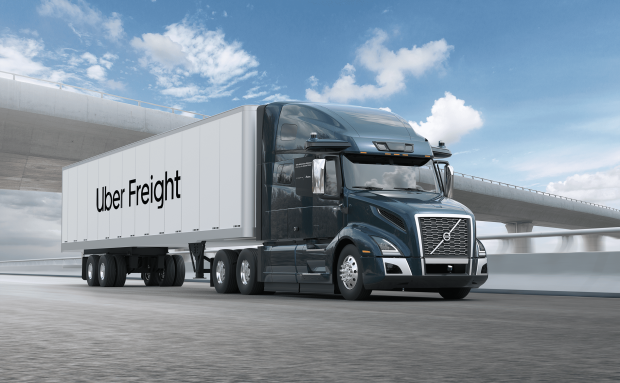Uber Freight’s Possible IPO Faces Headwinds as Supply Chains Remain in Flux

For Uber, what comes next for Freight is freighted with questions.
To that end, as reported this week, Uber is mulling a few scenarios. The options that are under consideration: The company is reportedly mulling an outright sale or spinning off the business into a separately traded entity via initial public offering (IPO).
In either case, Freight would become a new, public company, listed on an exchange, and operating with some independence from Uber, the parent company. And in that way, investors can place their bets more fully on the future of freight itself. In the meantime, Uber gets to monetize the operations, and capitalize on a trend that’s been apparent in the market, where several platforms have gone public in recent years.
Algorithms and Some Headwinds
As for the business model itself, the Freight business connects shippers and carriers, in tech-driven fashion, as the “demand” side of the equation offers up pick-up location and the time frame in which goods are to be delivered. A quote is provided, and upon acceptance, the job is assigned to an Uber carrier. Pricing is determined by supply and demand and market conditions (weather, too), and by algorithm.
As noted in the company’s most recent earnings report and our own coverage, and commentary from CEO Dara Khosrowshahi, recent months showed what the CEO said had been “a challenging quarter for Uber Freight, driven by category-wide headwinds. A weaker demand environment drove a top- and bottom-line miss against our plan for Q4, and we continue to expect relatively muted trends in the near term.” Indeed, Freight gross bookings declined sequentially. Though revenues were up 43% year over year, that’s been a significant slowdown from triple digit growth rates in the past; fourth quarter sales stood at $1.5 billion, down from $1.8 billion in the third quarter.
For Uber’s management, cross-pollination has been a key hallmark of its platform model, where drivers pivot between ride-hailing and food delivery as customer demand waxes and wanes across those use cases. The cross-platform membership program is doing well, as the company has been able to double its Uber One roster to 12 million members.
No Slam Dunk
An IPO in this environment would be far from a slam dunk. Last month, online booking platform Freightos went public, and shares opened at more than $22 during the first day of trading (they’d been offered at $10 vis SPAC deal), and at this writing trade at $4.50. We’ll know more about the fundamentals of that platform when the company posts earnings results next week.
Any strategic decision on Uber Freight’s future comes as inflation is proving to be a headwind for consumer spending, and households, per PYMNTS data, are shifting their priorities.
More muted demand at the individual level, of course, causes ripple effects up and down supply chains, which in turn means that in logistics, supply outpaces demand, rates fall, trucks idle.
Earlier last month, Uber offered up its latest overall freight market update detailing how carriers have been adding more drivers and trucks, sand so supply rose at single digit percentages, while demand slipped just a bit. Carriers are still seeking to improve their operations, noted Uber. And on that last point, we note that the long-term platform model’s prospects remain intact.
But for Uber, the pressures on top line momentum are here and now, and the Freight model does not share the customers that have made ride-hailing/delivery such a success. If Uber does indeed decide to carve out the Freight business, the move will simply prove the point that as times change, companies must, too.

